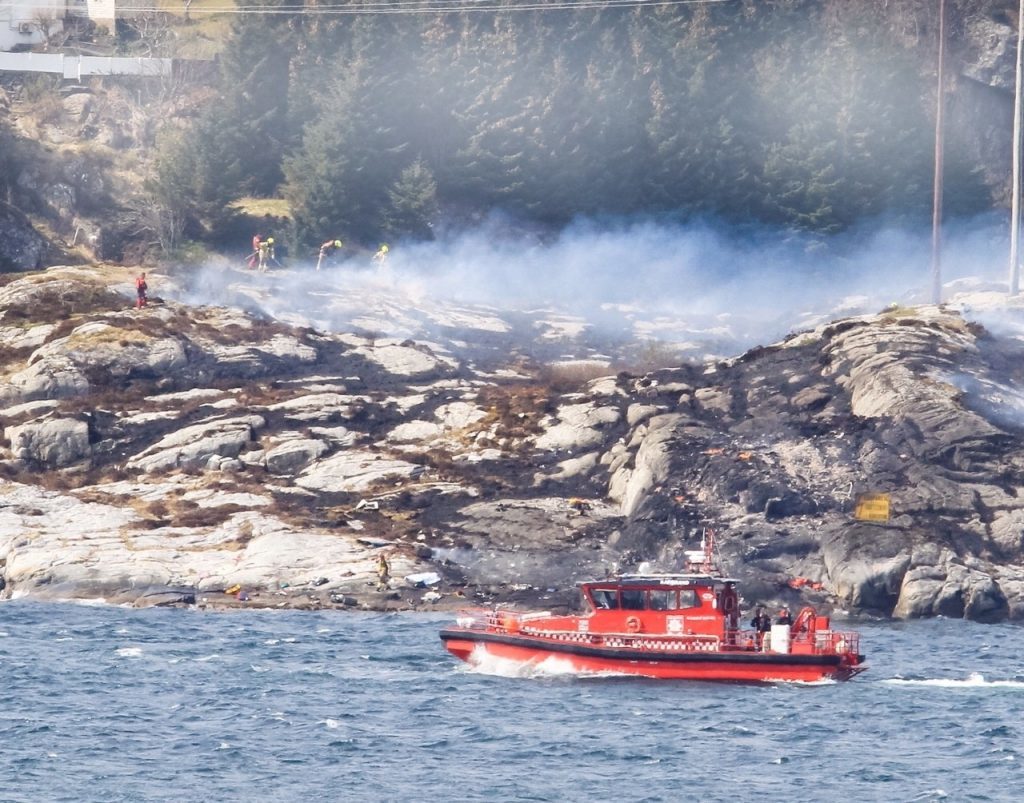
A mother who lost her son in a North Sea helicopter accident eight years ago said similarities with last year’s Norway crash raised serious questions over the safety of the aircraft.
Audrey Wood’s son, Stuart, was 27-years-old when he was killed along with 15 others when the Super Puma AS332L2 crashed off the coast of Aberdeenshire in 2009.
Another 13 people were killed in a unrelated incident off Norway last April, involving a sister model of aircraft, the EC225.
The Norway flight had been returning from the Statoil’s Gullfaks B platform to Bergen on April 29th when the main rotor blades completely detached from the aircraft.
Witnesses described a noise ‘like thunder’ or a car missing a gear as the blades broke away.
The aircraft carriage dropped 2,000ft in the last 10 seconds of its journey.
The main rotor blades were caught on video continuing to spin through the air before landing to the rocky coastline.
Norwegian crash investigators, who have been probing the cause of the 2016 accident, released an interim report yesterday – almost a year on from the fatal crash.
In the report, investigators said there were “clear similarities” between the 2009 crash and last year’s incident, both of which are believed to have involved a fatigue fracture on the main gearbox.
Mrs Wood said the findings raise serious concerns about the safety of the Airbus-made Super Puma aircraft.
She said: “Of course this raises concerns for us.
“There’s obviously a fault there. If it’s pre-existing in other aircraft that needs to be identified.
“If it’s a weakening of the metal then a metallurgist need to look at the materials that are being used.”
She added: “Our thoughts are with the family and friends of the Norwegian incident.
“This just brings home all our anger again.”
Statoil ruled out use of Super Puma helicopters “ever again” following last year’s accident off Turøy.
Flight restrictions on EC225s and AS332L2s remain in place in Norway and the UK.
There were 11 passengers and two crew on last year’s flight, which plunged onto rocks on the rugged coastline near Turøy, just west of the village of Solsvik, 15 miles from Bergen’s Flesland airport.
Among the passengers was Iain Stuart, from Laurencekirk, Aberdeenshire.
The latest AIBN report said that the aircraft involved in the 2009 crash, G-REDL,had a “near identical” main rotor gearbox to the EC225 involved in last year’s incident.
Investigators added: “In both accidents, one of the eight second stage planet gears in the epicyclic module fractured as a result of fatigue. However, there was one warning of possible gear fracture in the case of G-REDL, while there was no advance warning in this accident (LN-OJF).
“In the case of G-REDL, the origin of the crack was in a section of the failed gear which was not recovered. The G-REDL report displayed a stress model prediction of crack growth in the missing section of the planet gear.
“The crack propagation path in the retrieved second stage planet gear in this accident (LN-OJF) appears to be very similar to the estimated crack growth in the G-REDL.
“The AIBN will continue the investigation into how and why two similar catastrophic accidents could happen to near identical helicopters only seven years apart. Further assessment of the followup on the G-REDL safety recommendations and the continuing airworthiness of the gearbox after 2009 is a relevant issue.”
Airbus Helicopters chief executive Guillaume Faury said: “In the course of the AIBN investigation, additional elements brought by the 2016 accident showed that there were mechanical similarities between the 2016 accident and an earlier one, in 2009. We were not aware of any related issue at the time of the 2016 accident.
“The information available to us from the 2016 accident has allowed us to take protective measures that we could unfortunately not have put in place in 2009 based on the knowledge and evidence available at the time, and also because significant parts from the 2009 accident were never recovered.”